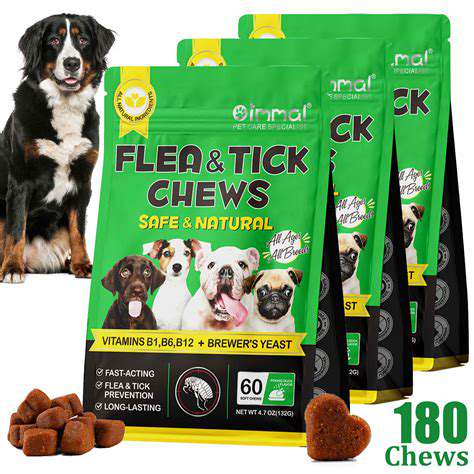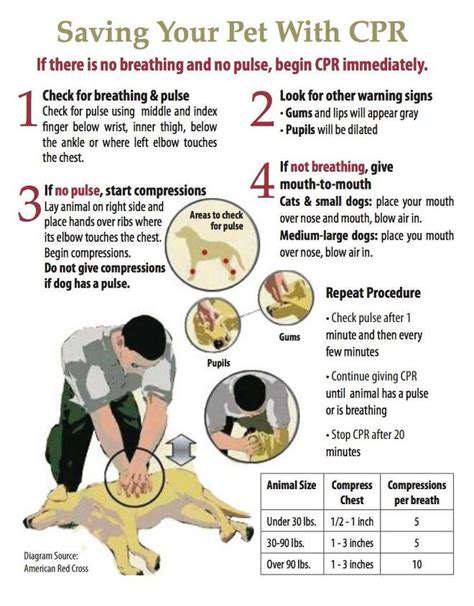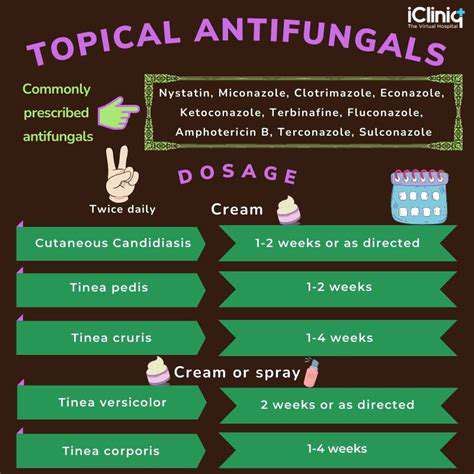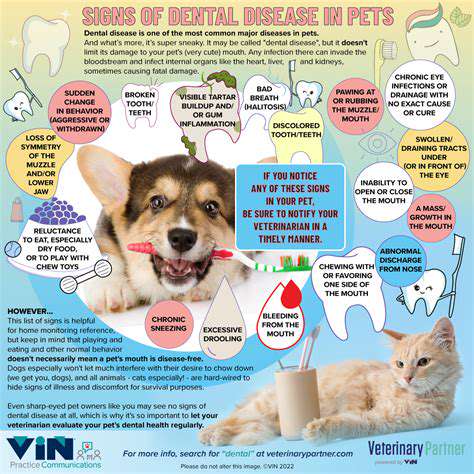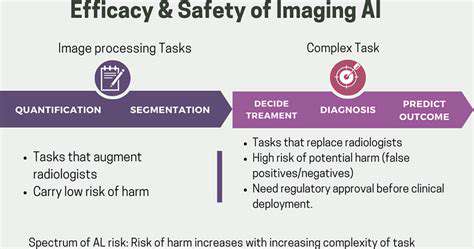Understanding Pet Allergies: Environmental and Food
Understanding the Triggers
Environmental allergies in pets share similarities with human allergies, often triggered by everyday substances. Dust mites, pollen, mold spores, and specific plants are common offenders. Pinpointing these culprits is essential for effective management and relief. Without proper identification, treatment remains guesswork, leaving pets uncomfortable.
Diagnosing environmental allergies involves careful observation and sometimes veterinary testing. Owners should note their pet's activities and surroundings, as this context helps veterinarians identify patterns. Elimination diets may also play a role in ruling out food-related causes.
Symptoms to Watch For
Allergic reactions in pets manifest in diverse ways. Skin issues like relentless itching, redness, and inflammation are telltale signs. Some pets develop respiratory symptoms—coughing, sneezing, or labored breathing—while others experience digestive upset. Secondary infections often arise from excessive scratching, compounding the problem.
Maintaining a symptom journal proves invaluable. Documenting flare-ups alongside potential exposures creates a timeline that aids veterinary diagnosis. This record should include dates, symptoms, and environmental changes.
Diagnosis and Testing
Veterinarians employ multiple approaches to diagnose environmental allergies. A thorough physical exam rules out other conditions with similar symptoms. Allergy testing, whether blood-based or intradermal, helps identify specific triggers. These tests differentiate between environmental and food allergies, guiding targeted treatment plans.
Testing results enable customized management strategies. Knowing whether pollen, dust, or mold causes reactions allows for precise environmental modifications and treatment options.
Management Strategies
Effective allergy management combines environmental control and medical intervention. Regular cleaning, hypoallergenic bedding, and air purifiers reduce allergen exposure. Veterinary-prescribed medications, from antihistamines to immunotherapy, provide symptom relief. Some pets benefit from omega-3 supplements to support skin health.
Consistency is key—maintaining these measures long-term prevents symptom recurrence. Seasonal allergies may require adjusting strategies as allergen levels fluctuate throughout the year.
Prevention and Long-Term Care
While complete prevention isn't always possible, proactive measures minimize allergy impact. Routine veterinary check-ups catch early signs of discomfort. Creating an allergen-minimized environment significantly improves quality of life for allergic pets. This includes frequent washing of pet bedding and using HEPA filters.
Long-term care requires adaptability. As pets age or environments change, allergy management plans may need adjustment. Close collaboration with a veterinarian ensures the approach remains effective over time.
The Role of Airborne Particles in Pet Allergies
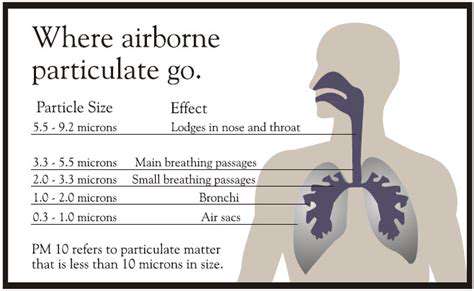
Airborne Particle Classification and Sources
Airborne allergens vary dramatically in size and origin. From microscopic pollen grains to visible dust particles, these substances trigger reactions in sensitive pets. Outdoor sources include pollen from trees and grasses, while indoor allergens encompass dust mites and mold spores.
Particle size influences how deeply allergens penetrate airways. Smaller particles reach deeper into lungs, potentially causing more severe respiratory symptoms in affected animals.
Impact on Pet Health
Inhaled allergens trigger immune responses that manifest as allergic symptoms. Persistent exposure can lead to chronic conditions like atopic dermatitis or recurrent ear infections. Some pets develop secondary bacterial infections from excessive scratching of irritated skin.
Symptom severity often correlates with exposure levels. Pets in high-allergen environments typically experience more intense reactions, underscoring the importance of environmental control measures.
Seasonal Variations
Allergen levels fluctuate with seasons, affecting symptom patterns. Spring pollen surges cause different reactions than fall mold spore increases. Recognizing these patterns helps anticipate and manage flare-ups.
Indoor allergens show less seasonal variation but may increase during humid months when mold thrives or winter when homes are sealed against cold weather.
Environmental Control Measures
Reducing airborne allergens requires multiple strategies. Regular vacuuming with HEPA filters removes settled particles. Air purifiers effectively capture circulating allergens, especially in bedrooms where pets spend much time. Wiping pets' paws after outdoor excursions limits allergen tracking indoors.
For severe cases, creating allergen-free zones gives pets respite from constant exposure. These measures work best when combined with veterinary-prescribed treatments.
Food Allergies: Unraveling the Dietary Connection
Understanding the Triggers
Food allergies stem from immune reactions to specific proteins. Common culprits include beef, chicken, dairy, and wheat—ingredients found in many commercial pet foods. Unlike environmental allergies, food reactions often cause year-round symptoms.
Interestingly, pets can develop allergies to foods they've eaten for years without issue. This delayed onset complicates identification of problematic ingredients.
Recognizing the Symptoms
Food allergy symptoms often involve skin and digestive systems. Chronic ear infections, paw licking, and gastrointestinal upset frequently indicate food sensitivities. These symptoms overlap with other conditions, necessitating veterinary evaluation for accurate diagnosis.
Symptoms may appear hours or days after eating the offending food, making the connection less obvious than with environmental allergies.
Diagnostic Procedures
Elimination diets remain the gold standard for diagnosing food allergies. This strict regimen involves feeding novel protein and carbohydrate sources for 8-12 weeks. Successful elimination diets require absolute dietary control—even small treats can invalidate results.
Blood and saliva tests for food allergies exist but produce more false positives than elimination diets. Most veterinarians recommend elimination trials for definitive diagnosis.
Dietary Management Strategies
After identifying allergens, long-term management requires strict avoidance. Prescription hypoallergenic diets use hydrolyzed proteins or novel ingredients. Home-cooked elimination diets offer another option but require veterinary nutritionist guidance to ensure balance.
Transitioning to new foods should be gradual to avoid digestive upset. All family members must understand the importance of not sharing forbidden foods with the pet.
Long-Term Management and Prevention
Managing food allergies is lifelong. Even small amounts of trigger foods can restart the allergic cycle. Reading labels meticulously prevents accidental exposure to problematic ingredients.
Regular veterinary check-ups monitor for nutritional deficiencies that might develop with restricted diets. Some pets eventually develop allergies to replacement proteins, necessitating further dietary adjustments.
Diagnosing Pet Allergies: A Multifaceted Approach
Identifying Potential Allergens
Allergy diagnosis begins with identifying possible triggers. Environmental factors like pollen and dust mites are common, but flea bites and food ingredients also cause reactions. Multiple allergies often coexist, complicating the diagnostic process.
Veterinarians consider geographic location, seasonality, and lifestyle factors when compiling a list of potential allergens. Indoor-only pets may have different sensitivies than those spending time outdoors.
Recognizing Allergic Reactions
Allergic pets exhibit varied symptoms. Skin problems predominate—itchiness, redness, and recurrent ear infections are hallmark signs. Respiratory symptoms, while less common in pets than humans, do occur in some sensitive animals.
Symptoms often worsen with age as repeated exposure intensifies immune responses. Early intervention prevents progression to more severe conditions.
Importance of Professional Diagnosis
Self-diagnosis often leads to mismanagement. Many conditions mimic allergies, including parasitic infections and hormonal imbalances. Veterinary expertise is essential for accurate diagnosis and appropriate treatment.
Diagnostic tests help differentiate allergy types. Intradermal skin testing identifies environmental allergens, while elimination diets diagnose food sensitivities. Blood tests provide additional information but are rarely definitive alone.
Treatment Options
Effective treatment combines multiple approaches. Antihistamines and steroids provide short-term relief, while immunotherapy offers long-term management for environmental allergies. Treatment plans should address both symptoms and underlying immune responses.
For food allergies, strict dietary management is essential. Secondary skin infections often require antibiotic or antifungal treatment alongside allergy management.
Lifestyle Adjustments and Prevention
Managing pet allergies requires environmental modifications. Frequent bathing removes allergens from skin and coat. Using allergen-proof covers for bedding reduces exposure to dust mites. Regular flea prevention is crucial, as flea bites exacerbate other allergies.
Consistency in implementing these measures determines their effectiveness. Combining medical treatment with environmental control provides the best outcomes for allergic pets.
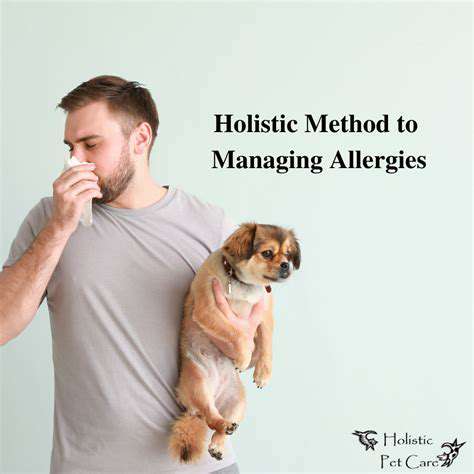
Read more about Understanding Pet Allergies: Environmental and Food
Hot Recommendations
- Customized Sleep Schedules: AI Driven for Sustainable Rest
- Crafting a Personalized Productivity Plan for Mental Clarity
- Sustainable Self Compassion: Cultivating Kindness Towards Your Mind
- Sustainable Productivity Hacks for the Busy Professional
- Sustainable Wellness for Parents: Balancing Family and Self Care
- Data Informed Self Care: Designing Your Personalized Wellness Strategy
- Sustainable Wellness for a Purpose Driven Life
- AI Assisted Mindfulness: Personalized Meditations for Deeper Practice
- Building Inclusive Mental Health Services: Key Initiatives
- AI Powered Self Care: Customizing Your Routine for Maximum Impact

